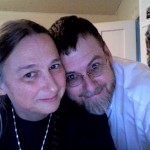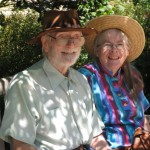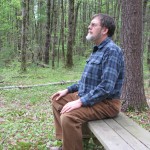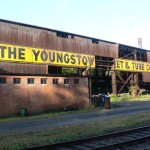I have been very aware of the growing darkness these last few weeks.
 It’s not surprising. I rise (too early!) and am out the door and off to work just about the time the sky is starting to gray up from the full blackness of night. As I drive over the wooded hills between my home and my job, the sky gradually warms. I watch as the east turns dying-embers red between the naked limbs of oaks and swamp maples. By the time I pull into my school’s parking lot, the buses are clearly yellow, and the soft smudges of shadow are just beginning to be visible. By the time I lay out the supplies for the day in my classroom, a yellow glare is starting to beat through my windows.
It’s not surprising. I rise (too early!) and am out the door and off to work just about the time the sky is starting to gray up from the full blackness of night. As I drive over the wooded hills between my home and my job, the sky gradually warms. I watch as the east turns dying-embers red between the naked limbs of oaks and swamp maples. By the time I pull into my school’s parking lot, the buses are clearly yellow, and the soft smudges of shadow are just beginning to be visible. By the time I lay out the supplies for the day in my classroom, a yellow glare is starting to beat through my windows.
But when I leave again at the end of the day, once again the land is fading back to charcoal and ash. By the time I reach my own house, the light in the windows is an appealing yellow, and the sky overhead is soft and dark.
It’s dark, my friends. Yule is almost here, and the wheel is still turning.
As a Quaker, I have learned to love the Light. Well, truth to tell, even in my earliest Pagan days, I loved it, too. There are so many meditations and magickal exercises that focus on moonlight, or on starry nights of this or that planetary conjunction. I did my time with these. But best of all, I found, was sitting in the full, red light of morning, and opening myself, my spirit, to that as well.
I was never a night-time only Witch.
As for the moon, I think modern Witches hardly understand why she is so lovely and so special. We relate, we moderns (whether Pagan or cowan) to the moon mainly as art or as icon. Lots of Pagans can call to mind the face of a somewhat gooey Lady of the moon from some Pre-Raphaelite, Goth, or Pagan artist. But how many of us could convincingly draw Her face, as it truly appears in the heavens?
And how many of us understand why She matters so much? How many of us understand, viscerally, that for millions of years, if you were outside at night, it was because She was there, overhead, to show you the way?
We worship (though we do not know it) the deities of electric light and power, giving them some of our best hours, our best time. And lighting a token candle or two, chanting and pouring a libation to a moon whose phase we know merely from a calendar can give us no real sense of what the moon meant, to men and women whose experience of Night was of two things only: Moon, and Dark.
Without the moon, the Dark is all there is.
Now, that’s not a bad thing. Frightening to us sometimes, because we know Dark (we moderns) no better than we know Moon. We think it must be full of terrors, and we are sure, if ever we enter the natural world, to bring mighty weapons to hold it at bay: flashlights and Coleman lanterns and floodlights.
But, you know, you can walk a trail in the woods in the dark–in the full dark, the real dark, the dark without the moon–if your feet are wise, and if you know your way.
And you can deal with the dark, the growing dark, the Midwinter Dark, as our ancestors did, once upon a time.
How did our ancestors live, back in the days before electricity banished the darkness?
Peter and I started an experiment one year with just that question.
Peter had read somewhere–I don’t know where–a study of some group of humans, the sort anthropologists love to write about–who lived communally, in a world without artificial light beyond firelight and the moon. And those who studied them noted how they dealt with the dark time of the year.
They slept. A lot.
Moderns are mainly sleep deprived. We nap, or sleep in for long hours when we vacation, but mainly, we do without. Unimaginable, then that entire groups of people would curl up and go to sleep when the sun’s light fails. That, by five or six on a winter’s night, whole families are at rest…and will stay so until six thirty or seven the next morning.
Except they don’t. Sleep is different, it turns out, when it is not artificially staved off by lamplight, but allowed to run the full length of a winter’s night. At times, it was more like a light doze, or a meditative wakefulness. And then, with little to divide it from waking, sleep would return again. People roamed in and out of dreams and waking several times each night. There was a different quality to it, not just a different quantity.
When Peter told me about this article he’d read, I was fascinated. I found it hard to imagine how my life would feel if we had such a deep, such an intimate connection to the Dark.
So, to the best of our ability, we tried it.
We knew we had to work within the confines of our modern lives. We had still to cook our food in a modern kitchen, not over an open fire. We had to wake artificially, to make it to our assigned working hours.
But to the extent that we could, we decided to set aside the time between Yule and Imbolc–February 2nd–for the Dark. We would use no electric light, no computers, no television, no telephone except for emergencies, and no radio for that time. Oh, at work we would use such things, as we had need, and we set aside a room in the house for our daughter (then a very independent eleven year old) to use such modern conveniences when she liked. But to the extent we could, we did without them.
We did not go to bed at sunset. Again, we had a very modern eleven year old in our family, and it was not at all an experiment she was willing to try, to go to bed at seven at night! But we led our evening hours only by candle-light and a little bit of lamplight. I discovered that I was sensitive to lamp oil burned indoors, a nd could not tolerate much of it–but candles are much dimmer than you think, when you need to rely on them for all your illumination. They’ll do to wash the dishes–but not to read a book, unless the print is quite large.
nd could not tolerate much of it–but candles are much dimmer than you think, when you need to rely on them for all your illumination. They’ll do to wash the dishes–but not to read a book, unless the print is quite large.
We did read. A lot, and out loud–a nineteenth century habit that we had always enjoyed to some degree, but which became important to us in our quiet and our shadowed house. It was intimate and soothing, and I have fond memories of what I read that winter.
Our Jewish friends Saundra and Mike, tired of being unable to reach us by phone, took to dropping by to spend time with us in the evenings. Saundra called us the “Shabbat house.” I was touched.
But we also slept. Whether it was the dimmer lighting, the quiet of a life without email and television, or simply ceasing the struggle against the Dark, we found ourselves aware of our sleepiness. We might not have gone to bed at seven, but we often were asleep by eight or nine.
It was good. The nights were soft, and the Dark was gentle.
And when, by Imbolc, the days were lengthening and the nights were growing shorter once again, we felt the returning light, in a way that’s simply untranslatable unless you have also lived a season with the Dark. Each tiny sign of the return of spring–not the opening of the buds, but the swelling of them; not the disappearance of the snow, but the thinning of it, and the way it reflected the fire of the sunset later every evening–became pronounced.
This is the power of the Dark.
As a child of the Light–in the Quaker ways as well as the old, Pagan ways–I will always revel in the full light of day, and in the ways it echoes in me the stirrings of Spirit, of God and of the gods.
But I also love the Dark. Winter dark, earth-dark, void-between-the-stars Dark. The darkness that is not Light’s enemy, but its lover, its best beloved, its refuge and its friend.
I am a child of the Light. And I am a child of the Dark. I love and I embrace them both.
Blessings of the season of soft rest and shadow to you all.















